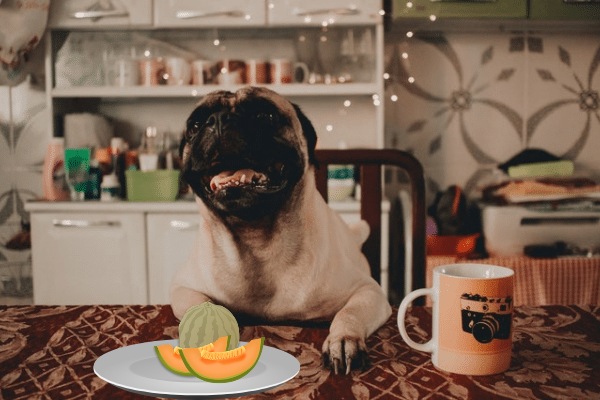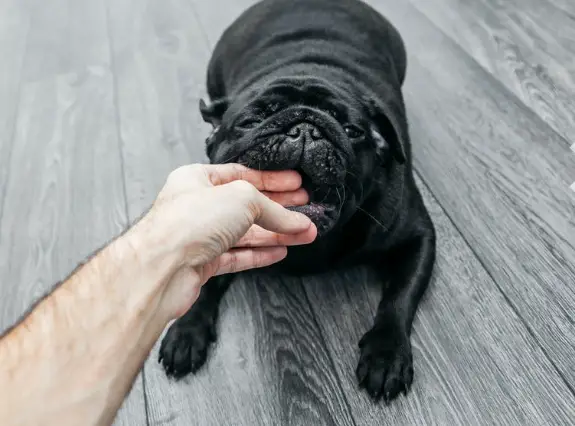Are Pugs Aggressive (7 Causes, Signs & Control)
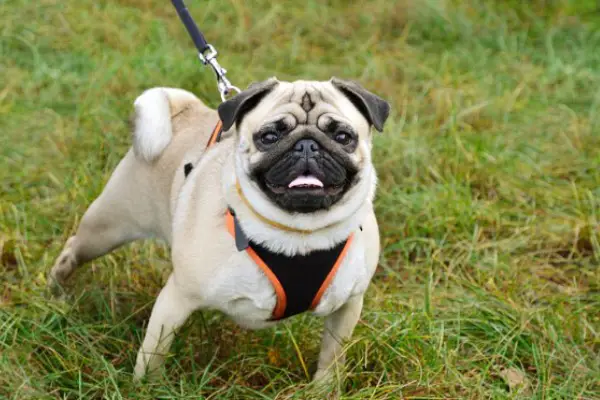
Every dog at some point will show signs of aggression, what matters is the level of aggression, so are pugs aggressive. Let’s find out!
We will be discussing the most common things or activities that may lead to a pug becoming aggressive.
We will also discuss most common ways to control or deal with aggression in pugs, if that interests you continue reading.
So… Let me answer your question are pugs aggressive before we continue!
Are Pugs Aggressive
Pugs are non-aggressive dogs that make excellent family pets; they are typically kind and naturally have a sociable temperament, and they are known for being friendly canines because they were bred to be human companions.
Pugs may act aggressively in response to being left alone in an attempt to communicate their dissatisfaction.
Inadequate socialization, fear, anxiety, and, most importantly, the owner’s lack of sufficient training or behavioral education can cause pugs to become aggressive.
Let’s take a look at the various forms of aggression in pugs.
What are the forms of aggression in pugs
Some of the most common kinds of hostility in pugs are as follows:
- Redirected form of aggression.
- Social form of aggression.
- Territorial form of aggression.
- Pain-Related form of aggression.
- Fear aggression.
- Anxiety form of aggression.
- Resource guarding form of aggression.
Let’s look at the most common signs of aggression in pugs to look out for.
Signs of aggression in pugs
You should be aware of the following common signs of pug aggression:
- Pug frequently show teeth unnecessarily.
- Snapping and growling on a regular basis.
- Freezing in the presence of other canines or strangers unnecessarily.
- Increase in size on a regular and temporary basis.
- When strangers or other pets approach, the pug barks excessively.
- When playing with other pets, he nips excessively.
- In the presence of strangers or other dogs, adopt a stiff body stance.
Let’s talk causes of aggression in pugs, which is the real deal!
Causes of aggression in pugs
Here are some of the most common reasons of pug aggression:
The main reason of aggression in pugs is a lack of good socialization, which is due to the owner’s lack of time to socialize with their pup.
Pugs are little dogs with enormous personalities who constantly want to be in charge and have you as their slave.
If a pug has not been properly socialized to be or tolerate other dogs, it will demonstrate aggressiveness toward them.
To have a non-aggressive pug, you must properly socialize your pug with other dogs and other objects that cause fear.
Unsocialized pug will display some behavior issues associated with them like barking and biting.
2. Chronic pain or illness
A canine illness is a condition or stage of a disease that affects a dog’s body or mind.
Ingesting contaminated food or bacteria, as well as injuries, insect bites, and parasite infections, can cause this.
When your pug is unwell and you ignore him for an extended period of time, he gets aggressive toward you, your family, and other dogs.
A sick pug is constantly angry and will attack other dogs of any size as a result of its illness.
3. Separation anxiety
When a dog is isolated from its owner for a lengthy period of time, it develops separation anxiety and displays behavioral difficulties.
Smaller breeds, such as pugs, may have separation anxiety and begin barking nonstop minutes after their owners leave.
Although little dogs are more prone to yelp, it’s unknown why some dogs have separation anxiety and others don’t.
This is one of the most common problems pug owners have, and it’s generally caused by a lack of basic training.
Pugs with separation anxiety become aggressive and bark excessively, demanding assistance.
4. Reoccurrence of traumatic event
Traumatic events in dogs are a common cause of aggressive behavior in pugs, and they are one of the most common causes.
As a result of earlier trauma, rescue dogs suffer from anxiety or post-traumatic stress disorder (PTSD).
Any pug that has previously been exposed to trauma is at risk of having behavioral issues.
Pugs that have lived in a harsh or hostile environment are more likely to suffer emotional issues.
They become fearful and angry as a conditioned self-protective behavior.
5. Poor obedience training
This is the most comprehensive solution to your query regarding why my pug attacks other dogs.
Inadequate obedience training accounts for 60 to 65 percent of canine aggressiveness toward other dogs, people, or other pets.
To reduce or eliminate hatred toward other dogs or humans, you must provide your pug with adequate obedience training.
Through effective obedience training, teach your pug directions and when to let go or snap out of a certain habit.
6. Frustration and depression
When a pug feels dissatisfied, there are various factors that contribute to his high level of aggression.
Paying less attention than usual, ignoring your pug, causing the dog’s eating routine to be disrupted, and so on.
Pugs are little companion dogs who are often frightened and upset by loud noises or sudden changes in routine.
All of which can lead to unnecessary frustration and depression, resulting in aggression.
7. Lack of proper attention or abuse
Pug aggressiveness can be provoked by a lack of attention, and pugs need their owners’ undivided attention all of the time.
Feeding your pug at the appropriate times, grooming, walking your dog, and making time to embrace or pet your pup are all things you should do to properly care for your pug.
Instead of yelling at your pug when he does anything wrong, correct him and make sure your pug understands the correction.
Make sure your pug is eating high-quality food and has access to fresh, clean water.
Provide your pug with the attention and exercise he or she requires, as well as grooming, to lessen the likelihood of aggressiveness.
How to control aggression in pugs
The following are some strategies for preventing or dealing with pug aggression:
Allow your pug to interact with both other dogs and people.
Introduce them to other canines or humans in a non-threatening and appropriate manner.
Don’t forget to thank your pug if they’ve interacted in a good manner and haven’t been irritated.
When your pug is among other people, keep an eye on them since they can become violent or agitated at any time.
If they get aggressive, get rid of them as soon as possible to prevent them from biting someone.
If your pug appears furious or violent when near other dogs or humans, don’t offer them treats, pet them, or carry them.
Pugs may be socialized in a variety of methods, including:
- Enroll them in puppy courses.
- Bring them to a dog park.
- Take them to other dog owners’ homes.
- Take them for a stroll in the evening.
- Bring them on a camping trip.
- Taking them to dog shows is a good idea.
- Bring them to the beach.
- Take them on a shopping trip.
- Other dog owners should welcome to if they visit.
2. Desensitize your pug
It would be fantastic if you could give an explanation for Pug’s aggressive behavior.
Make their life as easy as possible for them by avoiding circumstances or activities that may cause them to become hostile.
While not all aggressive pug triggers may be avoided, the vast majority can be avoided with a bit additional effort.
If your pug is afraid of other animals, it’s best not to bring them into the house.
Or desensitize your pug with other animals that gets him aggressive, letting him know it’s fine for other dogs to be around.
3. Provide mental stimulation activities
If you don’t give enough mental stimulation and exercise for your pug, he or she may acquire undesirable habits and behaviors.
Because of their small size, your pug will be entertained with a daily routine of 15 to 30 minutes.
Take your dog for walks and short runs to stimulate healthy growth.
Toys, video games, TV shows, and other forms of amusement are also available.
Provide food puzzle toys, engaging and interactive toys should be made available.
4. Never punish for aggression
Punishing your pug for being aggressive almost always has the opposite effect and exacerbates the problem.
If you strike, shout, or use any other unpleasant approach to deal with a growling dog, the pug may feel compelled to bite you as a kind of self-defense.
Your pug may bite someone else without your knowing as a result of the punishment.
When a pug growls at kids, he’s expressing his unhappiness with their presence.
If you penalize a pug for growling, he may bite rather than inform you the next time he is afraid.
5. Provide your Pug’s basic needs
Pugs like being lavished with love and attention, which may help them avoid being violent.
Give your pug a positive reward when they do something you appreciate, and associate aggressiveness with bad behavior.
Reward them with praise and treats. Ignore them for a time if they indulge in conduct you don’t like.
To assist your pug find out which activities you appreciate and which ones you don’t, you’ll need to be persistent and patient.
6. Stick to a daily routine
Don’t meddle with your Pug’s feeding routine or space if you want to help him become less aggressive.
Make a strategy for your pug and stick to it. Make sure your pug has something to do while he isn’t napping.
If you adjust your pug’s eating schedule, stick to it until yours and your Pug’s expectations are no longer met.
If you keep changing your pug’s food, he will feel abandoned and ignored, so stick to what works for you right now.
7. See a vet
In many circumstances of aggression in pugs pr other small breeds, training is insufficient on its own.
Medication may be required to assist aggressive in your pug to control their behavior.
It’s vital to understand that a dog that is afraid, tense, or anxious cannot learn new things.
Consider using medication to help your dog overcome his or her fear. Many dogs will only need medication for a brief amount of time.
For more information, speak with your veterinarian.
With the information provided on this page I strongly believe your question Are Pugs Aggressive was resolved.

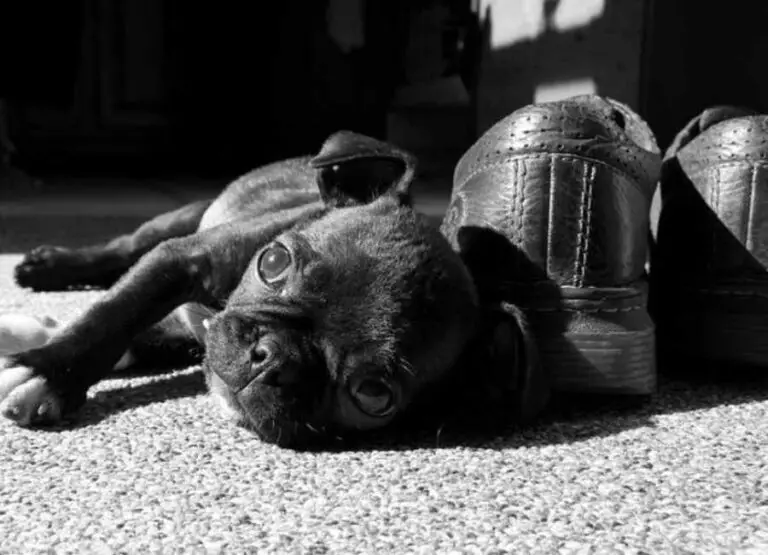
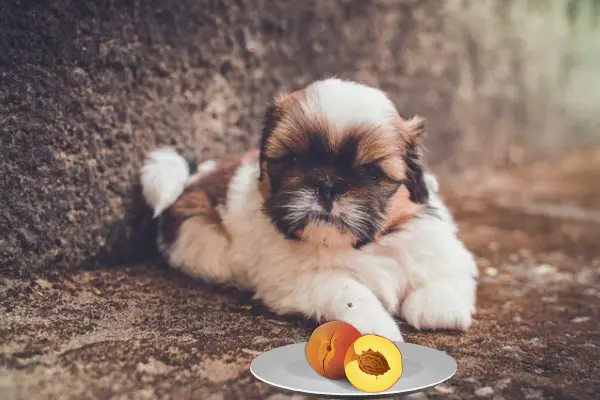
![Why Is My Dog Aggressive When Sleepy [12 Reasons & Fix] Dog Aggressive When Sleepy](https://petcreeks.com/wp-content/uploads/2023/02/Dog-Aggressive-When-Sleepy-768x555.jpg)
